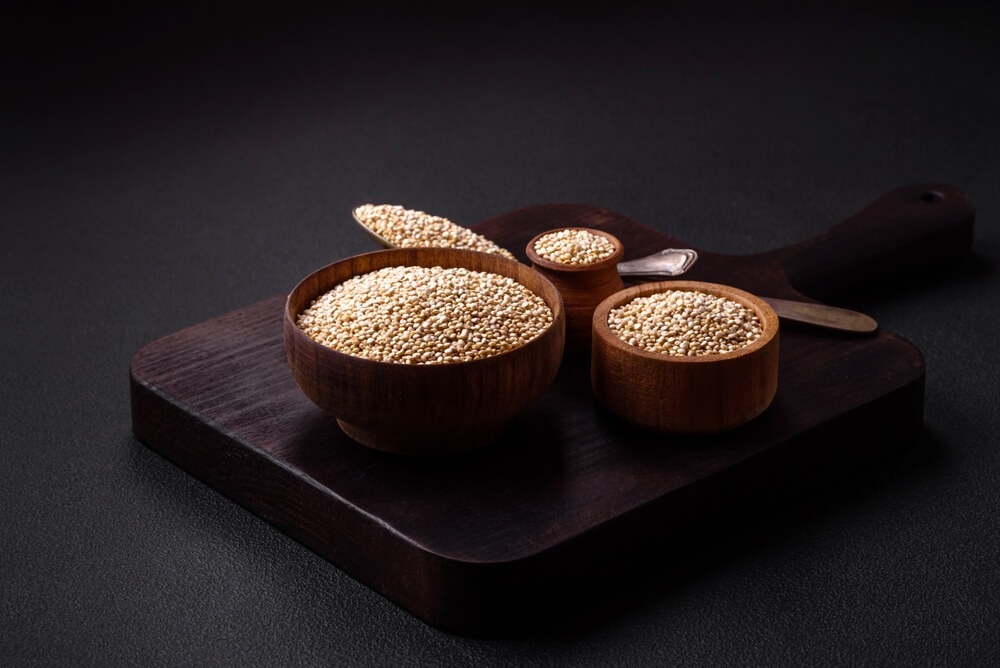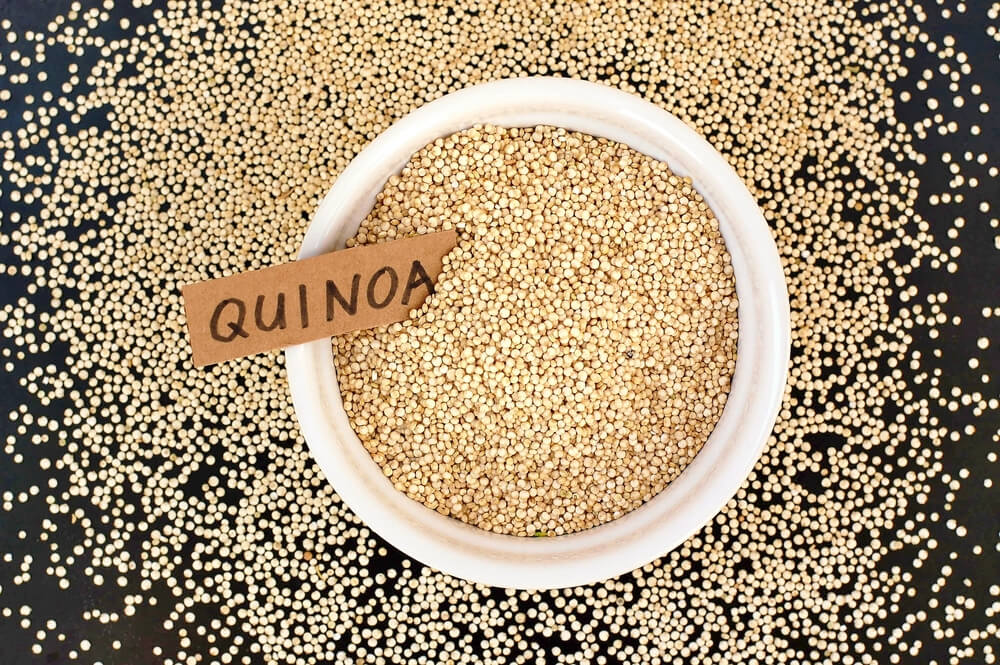
Quinoa, often hailed as a superfood, has gained immense popularity in recent years due to its impressive nutritional profile and versatility in the kitchen. But what exactly is quinoa, and why has it become such a staple in health-conscious diets around the world?
Originating from the Andean region of South America, quinoa is an ancient grain that has been cultivated for thousands of years. It was a vital crop for the Inca Empire, who referred to it as “the mother of all grains.” Despite its long history, quinoa only began to gain worldwide recognition in the late 20th century.
One of the primary reasons for quinoa’s rise to fame is its remarkable health benefits. Unlike most grains, quinoa is a complete protein source, meaning it contains all nine essential amino acids that our bodies cannot produce on their own. This makes it an excellent protein alternative for vegetarians and vegans. Additionally, quinoa is rich in fiber, vitamins B and E, magnesium, iron, potassium, and antioxidants.
The gluten-free nature of quinoa also contributes to its popularity among those with gluten sensitivities or celiac disease. Its versatility allows it to be used in a variety of dishes (from salads and soups to breakfast bowls and desserts) making it an easy addition to any meal plan.
Qinoa’s combination of historical significance and modern-day health benefits has solidified its status as a beloved superfood across cultures. Whether you’re exploring new dietary options or simply looking for nutritious alternatives to traditional grains, quinoa offers both flavor and nourishment that are hard to beat.
The Gluten-Free Status of Quinoa
Quinoa has gained popularity as a staple in gluten-free diets, but is quinoa truly gluten-free? The answer is a resounding yes. Quinoa is naturally devoid of gluten, making it an excellent choice for those adhering to a gluten-free diet. As one of the most versatile and nutritious grains available, quinoa offers an array of benefits for individuals with celiac disease or those who are sensitive to gluten.
Unlike wheat, barley, and rye (which contain the protein that can trigger adverse reactions in people with celiac disease) quinoa belongs to a different botanical family and does not contain gluten. This makes it a safe alternative for those seeking to avoid this protein while still enjoying grain-like foods.
Moreover, quinoa stands out among other gluten-free grains due to its impressive nutritional profile. It is rich in essential amino acids, fiber, vitamins, and minerals (all crucial components of a balanced diet). Incorporating quinoa into meals can provide not only variety but also significant nutritional benefits.
While quinoa itself is inherently gluten-free, it’s important for consumers to be mindful of potential cross-contamination during processing or packaging. To ensure safety, especially for those with celiac disease or severe sensitivities, choosing certified gluten-free products can provide peace of mind.
In conclusion, the status of quinoa as a reliable option among gluten-free grains is indeed fact rather than fiction. Its natural absence of gluten coupled with its nutritional advantages makes it an ideal addition to any diet seeking variety without compromising on health or safety.
Nutritional Profile of Quinoa

Quinoa has rapidly gained popularity as a superfood, and for good reason. This ancient grain offers an impressive nutritional profile that makes it a valuable addition to any diet. One of the key highlights of quinoa is its protein content. Unlike most plant-based foods, quinoa is a complete protein, meaning it contains all nine essential amino acids that our bodies cannot produce on their own. This makes it an excellent protein source for vegetarians and vegans.
Beyond its protein benefits, quinoa is also rich in vitamins and minerals. It is particularly high in B vitamins such as folate, which plays a crucial role in cell growth and metabolism. Additionally, quinoa provides significant amounts of vitamin E, known for its antioxidant properties that help protect cells from damage.
Fiber is another notable component of quinoa’s nutritional makeup. As a fiber-rich food, quinoa aids digestion by promoting regular bowel movements and maintaining gut health. The high fiber content also contributes to a feeling of fullness, which can be beneficial for those looking to manage their weight.
Incorporating quinoa into your meals not only enhances the nutrient density of your diet but also adds variety with its unique texture and nutty flavor. Whether used as a base for salads or as an alternative to rice or pasta, this powerhouse grain supports overall health while delighting the palate with its versatility.
The Health Benefits of Including Quinoa in Your Diet
Quinoa has rapidly gained popularity as a nutritional powerhouse, and for good reason. As one of the leading heart health superfoods, quinoa offers an impressive array of benefits that can significantly enhance your diet. Rich in essential nutrients like fiber, protein, and various vitamins and minerals, quinoa is particularly celebrated for its role in promoting cardiovascular health. Its high levels of antioxidants help reduce inflammation and lower the risk of heart disease by improving cholesterol levels.
Moreover, quinoa is an excellent choice for those interested in weight management foods. It provides a satisfying source of protein and fiber that helps keep hunger at bay while supporting muscle growth and repair. Unlike many grains, quinoa contains all nine essential amino acids, making it a complete protein source ideal for vegetarians and vegans seeking to maintain balanced nutrition.
Incorporating quinoa into your meals is both simple and versatile. Whether used as a base for salads, added to soups or stews, or served as a side dish instead of rice or pasta, this superfood can easily fit into any meal plan while delivering substantial health benefits with every bite.
How to Cook and Incorporate Quinoa into Your Meals
Quinoa has become a staple in many kitchens due to its versatility and nutritional benefits. Cooking with quinoa can elevate your meals, providing a healthy and satisfying base for various dishes. Here’s how you can cook quinoa perfectly and incorporate it into your daily meals.
To start, rinse the quinoa thoroughly under cold water to remove its natural coating, which can taste bitter. For perfect quinoa every time, use the ratio of one part quinoa to two parts water or broth. Bring the liquid to a boil, add the rinsed quinoa, cover with a lid, and reduce the heat to simmer for about 15 minutes until all the liquid is absorbed. Let it sit off the heat for five minutes before fluffing it with a fork.
Once you’ve mastered how to cook quinoa perfectly, you’ll find that easy quinoa recipes are abundant. Here’s a list of ideas to get you started:
1. Quinoa Salad: Combine cooked quinoa with cherry tomatoes, cucumber, feta cheese, and olives for a refreshing Mediterranean salad.
2. Breakfast Quinoa Bowl: Mix cooked quinoa with almond milk, cinnamon, honey, and top with fresh berries for a nutritious breakfast.
3. Quinoa Stir-Fry: Use cooked quinoa as an alternative to rice in your favorite stir-fry recipe.
4. Stuffed Bell Peppers: Fill bell peppers with seasoned ground turkey or beef mixed with cooked quinoa for a hearty meal.
4. Quinoa Soup: Add cooked quinoa into vegetable or chicken soup for added texture and protein.
Incorporating these easy recipes into your meal plan will not only diversify your diet but also ensure you’re making use of this superfood’s full potential in delicious ways!
Potential Allergies and Sensitivities Related to Quinoa Consumption
Quinoa has gained popularity as a nutritious superfood, but it’s important to be aware of potential allergies and sensitivities that some individuals may experience. While quinoa is generally considered safe for most people, there are cases where it can trigger allergic reactions or food sensitivities.
Quinoa allergies are relatively rare but can occur. Symptoms of a quinoa allergy may include skin rashes, hives, itching, and in more severe cases, difficulty breathing or anaphylaxis. If you suspect you’re experiencing any quinoa allergy symptoms after consumption, it’s crucial to seek medical attention immediately.
Apart from true allergies, some individuals might experience food sensitivities related to quinoa. These sensitivities often manifest as digestive issues such as bloating, gas, or stomach discomfort. It’s essential to differentiate between an allergy and a sensitivity since the latter typically involves less severe reactions.
If you notice any adverse symptoms after eating quinoa, it may be worthwhile to consult with a healthcare professional or allergist. They can help determine whether you’re dealing with an allergy or sensitivity and advise on appropriate dietary adjustments. Being informed about these potential reactions ensures that you can enjoy the benefits of quinoa while safeguarding your health.
Embrace the Versatility and Health Benefits of Gluten-Free Quinoa Today!
As we conclude our exploration of gluten-free quinoa, it’s clear that this ancient grain offers remarkable versatility and numerous health benefits. Quinoa is not only a powerhouse of essential nutrients, including protein, fiber, and various vitamins and minerals, but it also serves as an excellent alternative for those seeking to avoid gluten in their diets.
Incorporating quinoa into your meals can be a simple yet effective way to enhance your nutritional intake. Whether you choose to use it as a base for salads, incorporate it into soups or stews, or even enjoy it as a breakfast porridge, quinoa adapts well to a variety of culinary styles. Its mild flavor complements both savory and sweet dishes, making it an ideal ingredient for creative cooking.
Moreover, the health benefits of quinoa extend beyond its nutritional profile. It is known to support healthy digestion due to its high fiber content and may contribute to improved heart health by helping regulate cholesterol levels. Additionally, its rich antioxidant properties can aid in reducing inflammation and promoting overall well-being.
Embracing quinoa in your diet not only supports personal health goals but also aligns with sustainable food practices. As demand grows for environmentally friendly food sources, quinoa stands out as a crop that requires less water compared to other grains.
Incorporating gluten-free quinoa into your daily routine is more than just following a trend. It’s about making informed choices that benefit both your body and the planet. So why wait? Start enjoying the diverse culinary possibilities and the myriad health advantages that come with adding this exceptional grain to your diet today!
